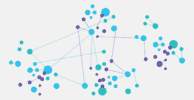
Ethics, Bias, and Hallucination
Who said ethics, bias, and hallucination were reserved for humans? Apparently, modern Large Language Models (LLMs) like GPT-4 didn’t get the memo, as they too are plagued by these pesky issues. It seems like even machines aren’t immune to the foibles of their creators.
The buzz around Language Learning Models (LLMs) is becoming increasingly hard to ignore. The recent announcement by Microsoft about the integration of Meta’s LLAMA 2 and the unveiling of Bing Chat for enterprise during the Inspire 2023 event has only further amplified this discussion. Likewise, Google’s Bard is redefining the ways we interact with AI. These state-of-the-art AI-driven text generators can craft everything from informative news articles and poetic verses to intricate code snippets. Despite the awe-inspiring capabilities of these technologies, there are, understandably, some apprehensions associated with their rapid advancement.
Bias:
One of the biggest concerns is bias. No, I don’t mean that the language models are biased against your choice of pizza toppings (although that would be a tragedy). What I’m talking about is more serious – the models can sometimes reflect the biases and prejudices that are present in the data used to train them. Think about it – if an LLM is trained on data that is primarily written by white men, it’s likely that the language it generates will also be biased towards that perspective. And that’s not even the worst-case scenario. If the data used to train the AI contains harmful or discriminatory language, it might learn and repeat those patterns as well. Yikes.
Ethics:
As these models become more advanced, they are increasingly being used for tasks like generating fake news, impersonating people online, and even writing essays for college students. And while these uses might seem harmless on the surface, they can have real-world consequences. What happens when a language model is used to spread propaganda or manipulate public opinion? It’s a slippery slope, my friends.
Hallucinations:
In the context of LLMs, hallucinations refer to when the machine generates language that is not based in reality or is inconsistent with the input data. Yes, this is a reality, Google and OpenAI developers admitted that their Language models are affected by Hallucination. Although, this might not sound like a big deal at first, but think about the implications. What if a language model generates a false news story that spreads like wildfire on social media? What if a chatbot trained on biased data is used to provide medical advice, leading to misdiagnoses and potentially harmful treatments? The consequences can be serious.
Privacy:
Large language models often require large amounts of data to be trained, which can raise concerns around privacy and data protection. There is a risk that sensitive personal information could be exposed or misused.
Fairness:
As mentioned earlier, biases can be present in LLMs, leading to unfair or discriminatory outcomes. This can be especially problematic in areas such as hiring, lending, or criminal justice, where decisions made by AI systems can have significant impacts on people’s lives.
Explainability:
LLMs are often described as “black boxes” because it can be difficult to understand how they arrive at their predictions or decisions. This lack of transparency can make it difficult to audit or regulate these systems, leading to concerns around accountability and trust. Most LLMs are trained not to reveal basis of their research.
Robustness:
LLMs can be vulnerable to adversarial attacks, where malicious actors intentionally manipulate input data to cause the model to generate incorrect or harmful language. Ensuring the robustness of these models is therefore an important challenge.
Generalization:
LLMs may perform well on specific tasks or datasets they were trained on but struggle to generalize to new or unseen data. This can limit the practical usefulness of these models in real-world applications.
Carbon footprint:
LLMs can require a lot of computational resources to train, leading to high energy consumption and carbon emissions. Addressing this issue requires developing more efficient training algorithms and computing infrastructure.
So, what steps can we take to mitigate the risks?
The first step is to acknowledge them. As AI increasingly intertwines with our lives, we need to recognize the potential risks and limitations. We must also constantly strive to better the data and algorithms that are the backbone of these machines.
During May 2023 Senate hearing, Sam Altman, OpenAI’s CEO – a company behind ChatGPT, warned of the serious repercussions if AI deployment goes astray. He highlighted the crucial need for regulatory measures from governments to counter potential threats from more powerful AI models.
A practical effort towards mitigating AI and LLMs’ risks is the “Ethical AI Toolkit” launched by the Partnership on AI, a nonprofit coalition committed to the responsible use of artificial intelligence. This toolkit provides resources to aid developers and organizations in creating ethically sound, transparent, and accountable AI systems.
On 19th July 2023, the United Nations Security Council held its first meeting to discuss the potential risks of AI. A summary of the key points from this discussion is available in the below video from BBC News.
While aware of their flaws, let’s not forget to enjoy the unique capabilities of these language models. Who knows, we might even see an AI-powered stand-up comedian in the future!




